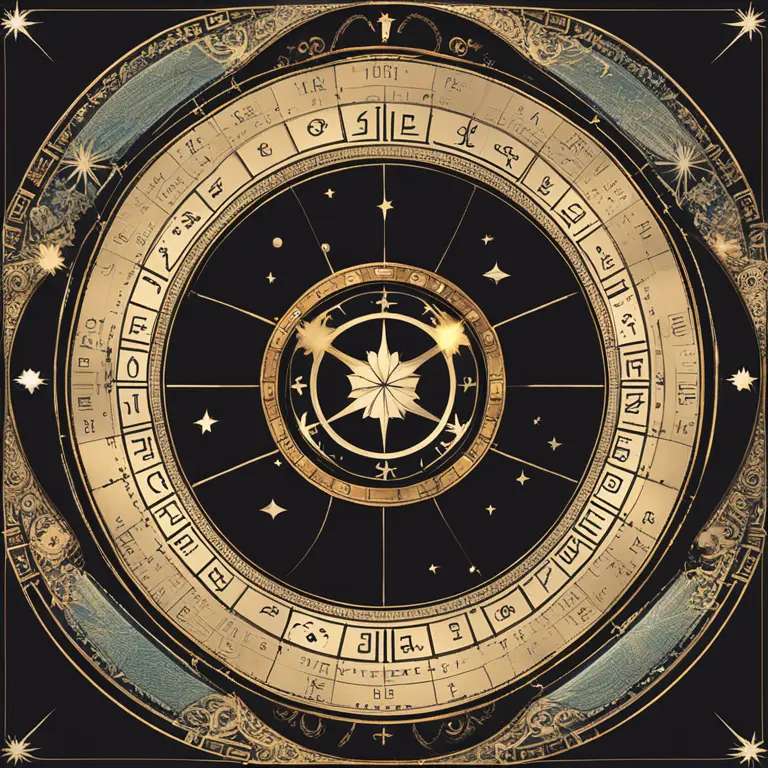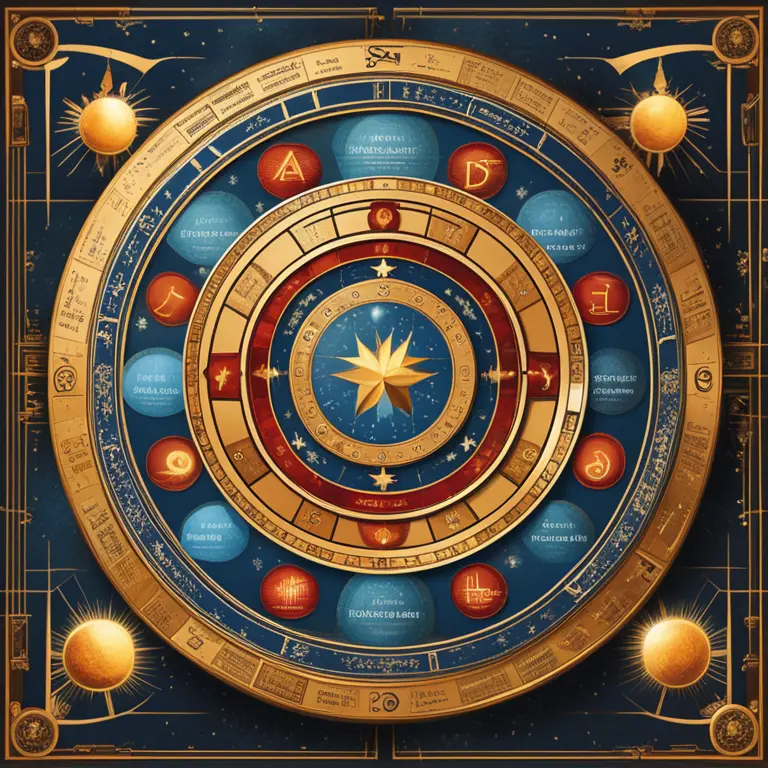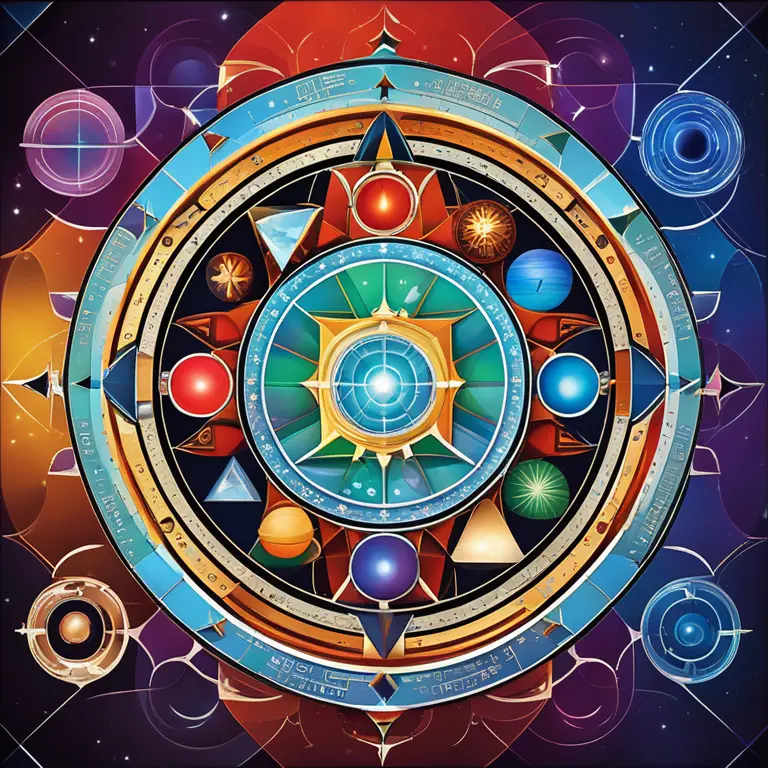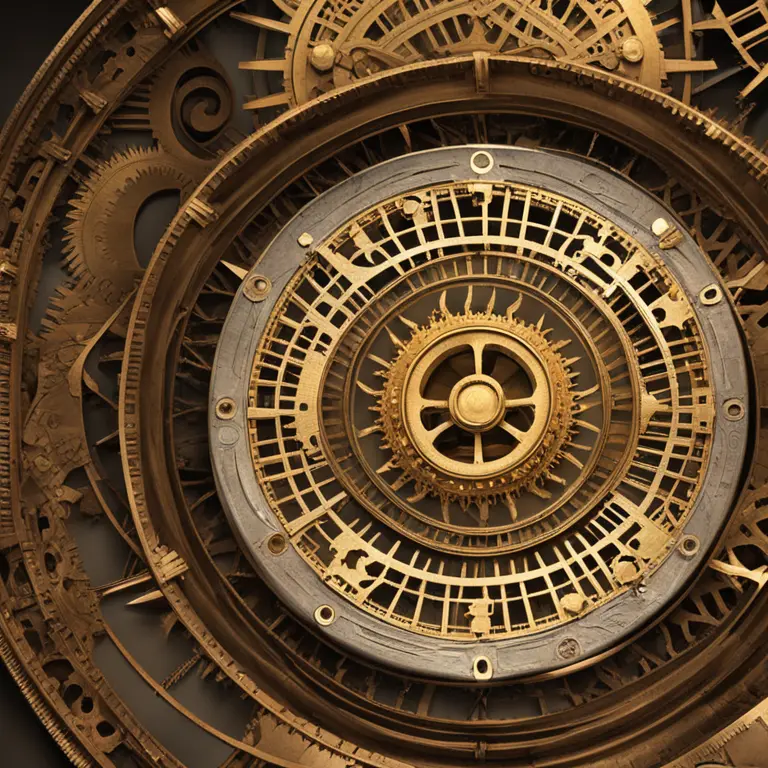
The Symbols of Astrology Aspects: A Guide to Their Meanings
Delve into the realm of astrology as this article provides an insightful guide into the aspect symbols that define relationships between celestial entities.
article by Priya Deshmukh
Astrology's Linguistic Thread
Astrology communicates through a rich tapestry of symbols and signs, akin to a celestial language that speaks of human experiences and cosmic connections. At the core of this language are the astrology aspect symbols, intricate glyphs that denote the angles planets form with each other in the celestial sphere. These aspects reveal the nature of the relationships between different energies within a natal chart, and their understanding is crucial for anyone looking to delve deeper into astrological analysis. As the heavens continue their eternal waltz, these are the keys to interpreting their silent but potent dialogue.

The Major Aspect Glyphs
Among the various aspects, five are termed 'major' due to their significant impact and more frequent occurrences. The conjunction (☌) symbolizes two planets at the same degree of the zodiac, representing unity and integration or a point of beginning. The sextile (⚹), denoting planets 60 degrees apart, offers opportunities and talents. The square (□), with a 90-degree angle, is the symbol of challenge and conflict but also growth. The trine (△), at 120 degrees, speaks to harmony and ease, whereas the opposition (☍) reflects planets 180 degrees apart, highlighting balance or confrontation between polarized forces.

Understanding Minor Aspects
Minor aspects, though less prominent, play a nuanced role in the astrological narrative. Semi-sextiles (⚺) and quincunx (⚻) aspects, at 30 and 150 degrees respectively, often point to adjustments and transitions. The sesquiquadrate (▫), at 135 degrees, ushers in an undertone of tension and perseverance. Each minor aspect has a unique story to tell, adding layers of complexity to the interpretations of celestial charts. Their subtle influences can sometimes become catalysts for inner transformations or quiet shifts in life's direction.

The Dance of Aspects in Modern Times
As astrology evolves, so do the interpretations of aspect symbols. In our interconnected world, where the fusion of ancient wisdom and contemporary understanding is celebrated, these symbols gain new depths. Modern astrologers emphasize the psychological and spiritual dimensions, recognizing that the once-feared squares or oppositions have the potential to be powerful drivers of personal growth and self-awareness. Aspect symbols in astrology are now more about potential than fatalism, serving as guideposts for navigating life's vicissitudes.

Aspect Patterns in Synastry
Synastry, or the comparison of two astrological charts, highlights how individuals' planets interact through aspects. Here, the aspect symbols articulate the symphony of relationships, from smooth harmonies to dissonant chords. Trines and sextiles in synastry sing of compatibility and ease, while squares and oppositions may require concerted effort to achieve balance. Understanding these patterns can offer profound insights into the dynamics of romantic partnerships, friendships, and even professional relationships in our increasingly astrologically literate society.
Calculating Aspects in the Digital Age
Technology has profoundly transformed astrology practice, with software and applications now capable of calculating complex celestial positions and aspect patterns with impeccable accuracy. The ease with which anyone can now access their unique astrological chart nudges us toward greater self-knowledge. The digital age brings astrology, a tradition as old as time, directly to our personal devices, making the understanding of astrological aspects more accessible than ever to the collective consciousness.
Published: 2/13/2024
Modified: 2/13/2024
More predictions
Come back here soon to learn more about yourself and your future


The Tarot Queen of Pentacles: A Rich Symbolism
Delve into the symbolism and meanings of the Tarot Queen of Pentacles to enhance your readings and personal insights.


The Fusion of Tarot and Horoscope Insights
Discover how tarot horoscope provides personalized guidance by blending the wisdom of the stars with the intuition of tarot.


The Tarot's Queen of Pentacles: A Guide to Practical Wisdom
Delve into the significance of the Tarot's Queen of Pentacles and discover how this card symbolizes nurturing abundance and material mastery in readings.